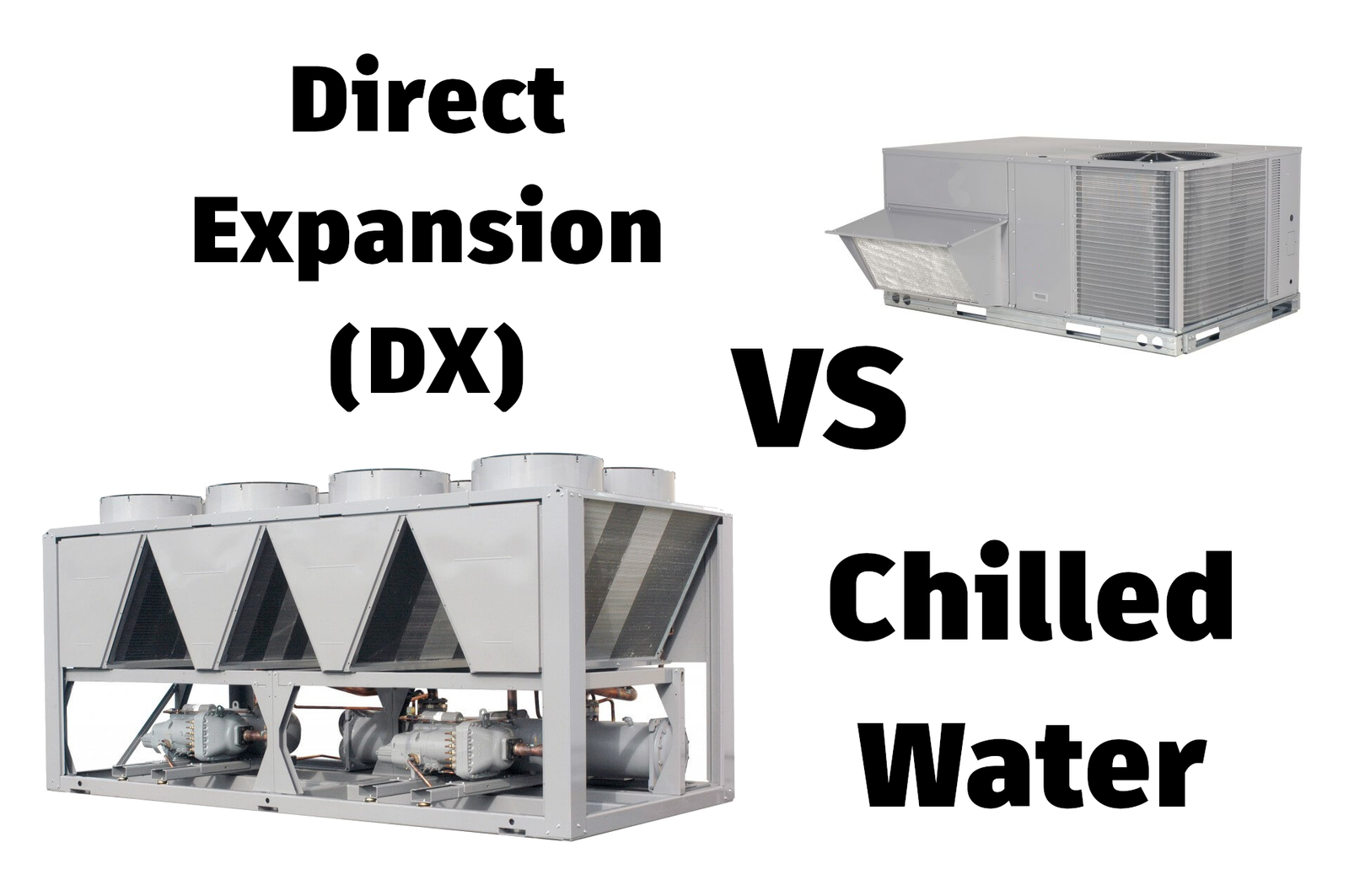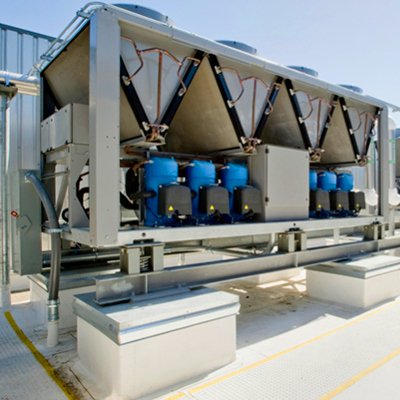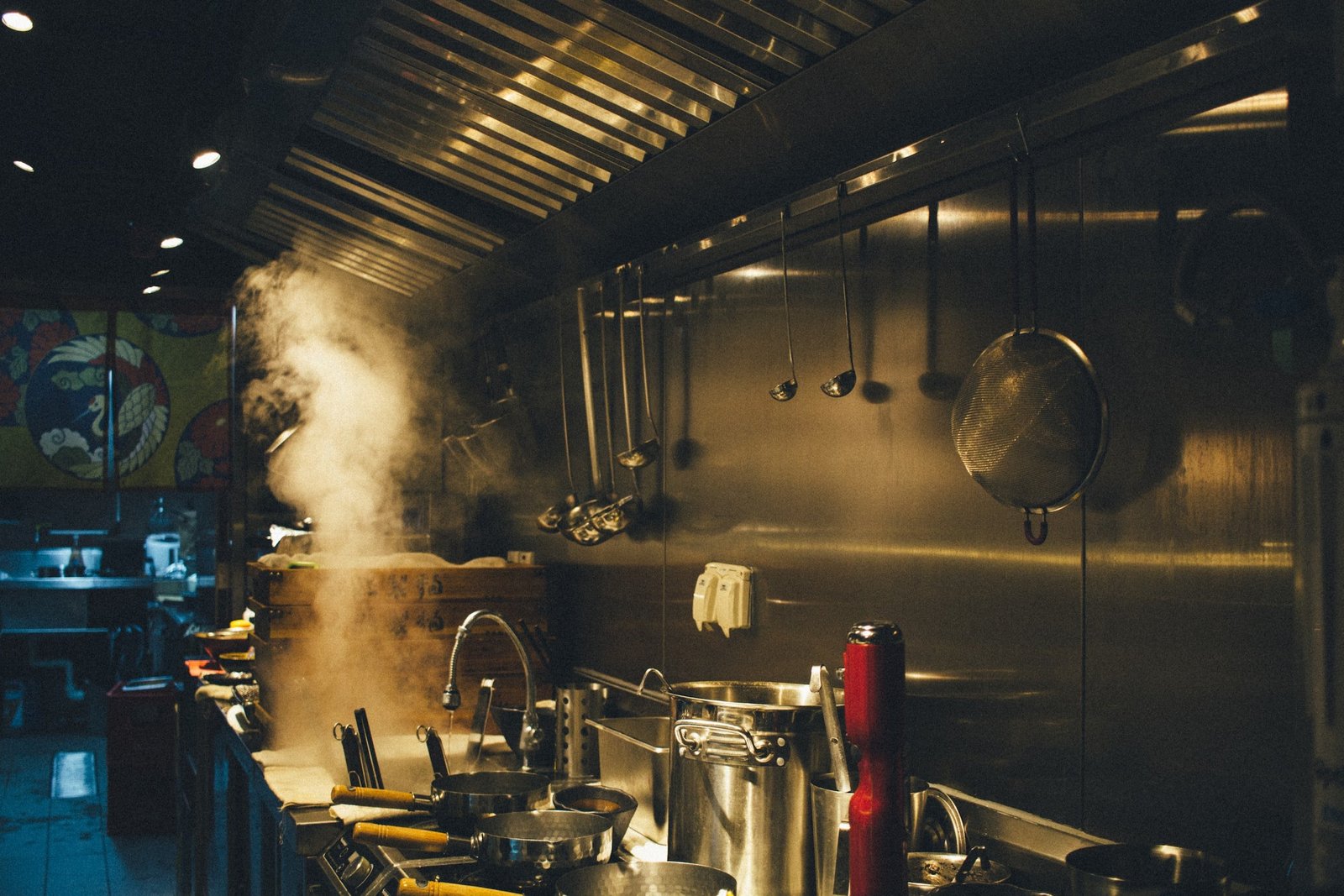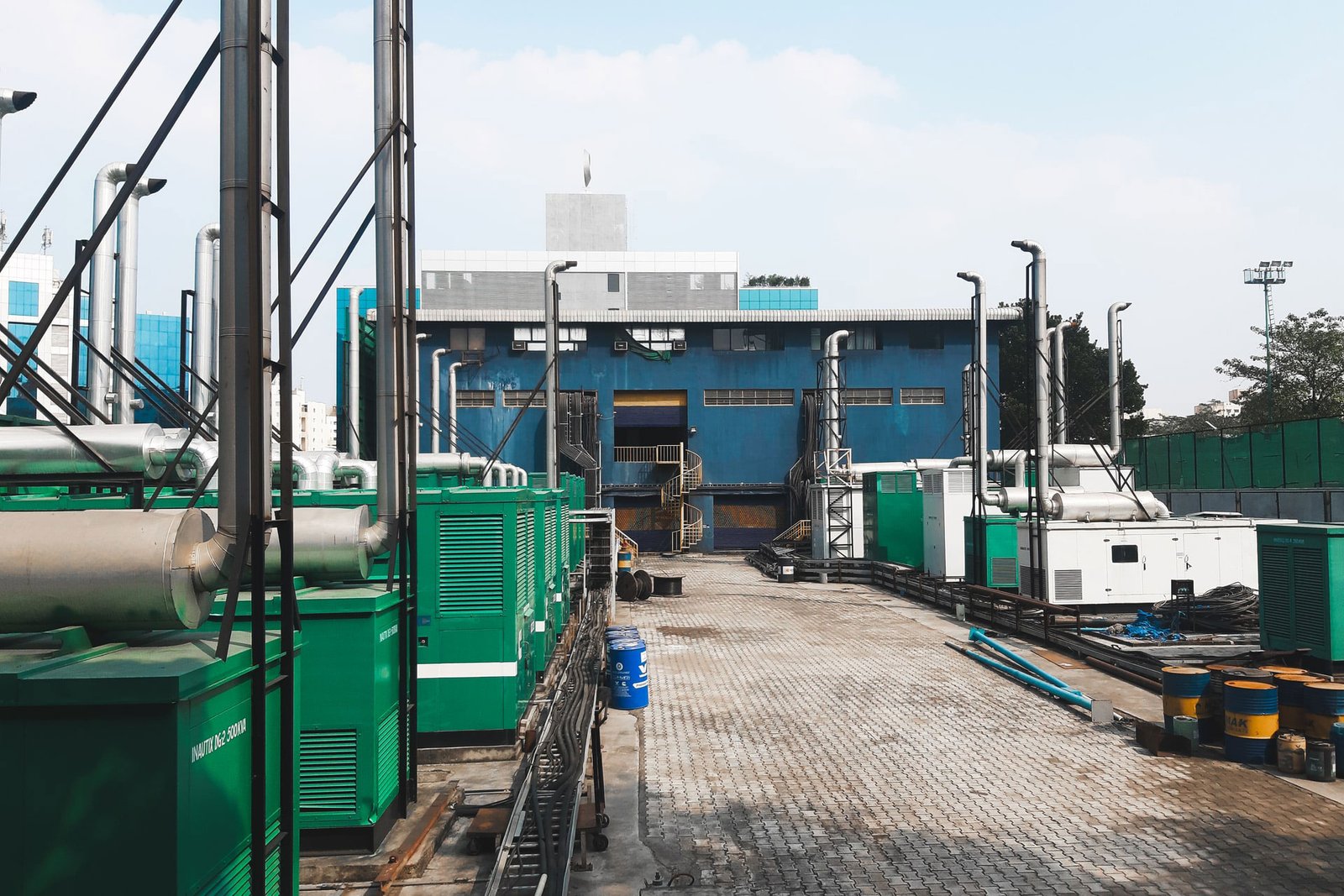
Direct Expansion Systems
In DX systems, refrigerant absorbs heat and hence boils or evaporates at a low pressure to form a gas. This gas is then compressed to a higher pressure, such that it transfers the heat it has gained to another source like ambient air and turns back (condenses) into a liquid. In this way heat is absorbed, or removed, from a low temperature source and transferred to a higher temperature source. The term expansion in direct expansion refers to the method used to introduce the refrigerant into the cooling coil. The liquid refrigerant passes through an expansion device (usually a valve) just before entering the cooling coil (the evaporator).

This expansion device reduces the pressure and temperature of the refrigerant to the point where it is colder than the air passing through the coil, bringing the air down to around 55F on a typical unit. This cooling, much like a cold glass, causes condensation, taking moisture out of the air to make the indoor space more comfortable and safe. DX system generally cover smaller commercial buildings, but that’s not to say there aren’t solutions for larger buildings. Large DX systems are available for many applications including 30,000 square foot offices to 60,000 square foot supermarkets. They’re typically very reliable, easy to maintain, and can be run in reverse to provide heating (heat pumps). The efficiencies of DX systems range from 0.7 to 1.0 kW/ton based on their size and design.
Chilled Water Systems
Chilled water systems function in a similar way to DX systems, but they use chilled water as the heat transfer medium. There are some notable differences, including the fact that water is not very compressible and isn’t being boiled off to create cooling. Rather, a DX system typically cools the water and that is distributed thoughout the building. You may be wondering, why not just distribute the refrigerant or cold air throughout the building as opposed to water. Well, in certain cases you could do that (VRF systems for refrigerant), but the real advantage of water is that it can transfer heat further and many times more effectively than air. Chilled water pipes can run hundreds of feet to serve multiple buildings (like a campus), and it also has more than 4 times the specific heat of air; this means that if you took the same mass of air and water and applied heat to raise their temperature the same amount, water would absorb over four times as much heat. With that, chilled water also travels up tall buildings better than refrigerant or air. As for the design, inside of the building are chilled water air-handling units (AHU) or fan coil units (FCU). These units typically consist of a chilled water coil, heating coil, filter and a fan with motor.


They begin to appear once the load is close to 75 tons as they begin to make more sense financially for building owners at this size and beyond. The major manufacturers of air cooled chillers include Trane, McQuay and Carrier. The efficiencies of the various air cooled chillers from these manufacturers range from 0.6 to 0.8 kW/ton. Each manufacturer may have their own variations and models of their air cooled chillers.
I’m sure that I wasn’t able to cover all the specifics about the comparison in this article, so if you have any questions feel free to reach out. If you’re looking to dive deep into understanding these systems and other variations, I’d suggest you visit ASHRAE. They have a huge range of information and courses for all types of professionals.
continue reading


